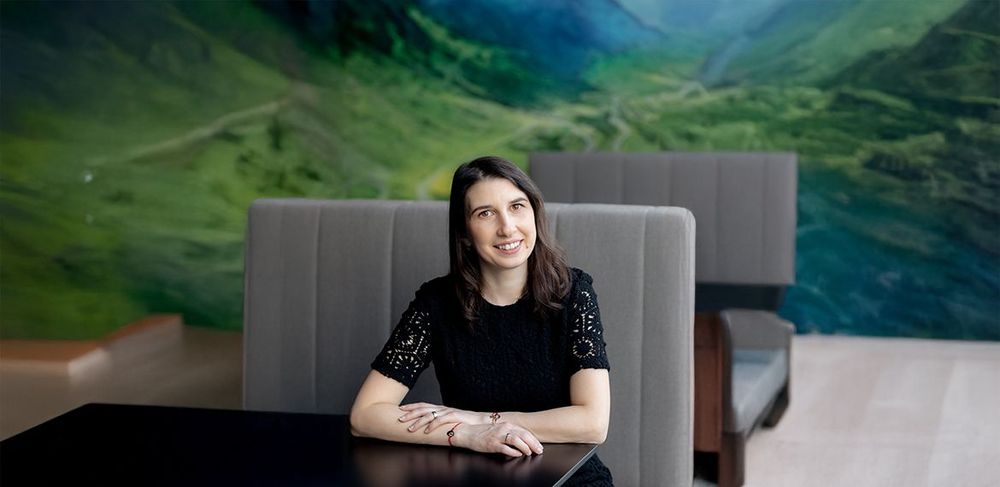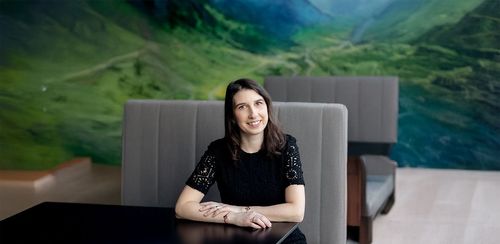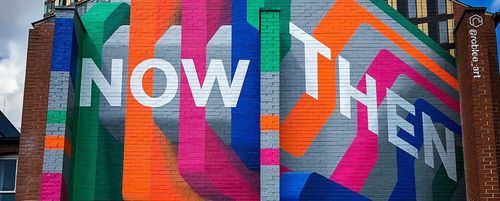

Sidonia Bodianschi, Nestlé: Flexibility is part of Nestlé’s culture

18 October, 2024
Share this article
Table of Contents
Some industries are often perceived as having a more traditional work environment, such as the food and beverage industry. However, things have changed significantly compared to ‘the old days.’ We spoke with Sidonia Bodianschi, Talent Acquisition Lead at Nestlé Romania, to find out how things operate within a multinational FMCG company and how essential flexibility is in their organizational culture.
Flexibility is part of Nestlé’s culture
Sidonia, you mentioned in a previous context that Nestlé employees benefit from a flexible schedule. How did the pandemic influence the decision to adopt a hybrid work model within your company?
The pandemic was the moment that triggered our transition to a hybrid work model. It was an intense period that acted as a catalyst for change. After reopening the offices gradually, we moved to a 50-50 work system where employees spend half of their work time in the office and the other half working from home.
What type of flexibility did you offer employees in terms of work schedules, both before and after the pandemic?
Flexibility has been part of our culture for a long time, even before the pandemic. When the job type allows it, employees can start their workday between 7:30 and 10:00, working eight hours with a half-hour lunch break, and the schedule adapts based on the start time.
Read also: What is remote work. Understanding the future of employment
Do all Nestlé employees benefit from job flexibility, or is it limited to certain roles?
For certain roles within the company, flexibility is limited. For example, colleagues working in Nespresso boutiques or customer support need to be available at fixed hours and often work in shifts. On the other hand, for office-based employees, flexibility is more accessible, with small exceptions such as the reception, which requires physical presence.
How did you arrive at the solution of working 50% in the office and 50% from home?
We didn’t conduct formal testing of different work models, but we concluded that a 100% office-based work model is no longer feasible. We found that each employee has unique needs and preferences, and as work methods evolved, it became essential to adopt a more flexible model. Therefore, the 50-50 office and remote work solution proved to be the optimal balance tailored to the diverse work styles within the team.
Read also: In-Person Collaboration for Remote Teams
Benefits that matter
What kind of benefits do you offer employees to support their mental health and general well-being?
Following the last employee well-being assessment, we found that stress had become a more significant issue, so this year, we launched a company-wide mental health program. We also created a partnership with a specialized organization, offering our colleagues anonymous access to a psychological support service. Employees can attend counseling sessions on various topics, both professional and personal, to help them better manage the challenges they face.
Are the benefits offered to employees tailored to their individual preferences, or do you have a standard package?
For us, it’s important to understand what employees want and adapt to their preferences rather than follow market trends. For example, offering a gym membership may seem appealing, but it doesn’t add value to those who aren’t interested in sports. We prefer personalized benefits, like a pet toy or a children’s book, that better match each employee’s lifestyle. With a diverse team of around 600 colleagues in Nestlé Romania, understanding each person’s needs helps us provide the support and benefits that truly matter.
Give me an example of a benefit you offer employees besides flexibility and mental support.
We offer employees a wide range of benefits, but one special one that we consider highly appreciated is the “Pets at Work” initiative, which allows them to bring their dog to the office as long as it’s vaccinated and trained. We’ve set up special areas for dogs and pet-friendly meeting rooms to ensure all colleagues, including those with allergies, feel comfortable.
Read also: George Moroianu (Flip): from start-up to eMag investment
How do you measure the productivity and well-being of employees?
We conduct regular surveys within the company to evaluate employee well-being and understand their needs. This year, we are conducting an extensive survey that measures not only productivity but also the overall well-being of employees—how they feel in the company, whether their needs are being met, and what difficulties they face. The results help us identify both areas of good performance and those that need improvement. Based on this data, we develop concrete strategies to address these aspects and improve our employees’ experience.
100% hybrid work but with face-to-face collaboration
How do your teams manage virtual collaboration at the regional level, and how often do you meet face-to-face?
We predominantly work in a virtual environment, especially with teams collaborating regionally with Bulgaria, Serbia, Croatia, and more recently, Ukraine, which means that meetings and discussions mostly take place online.
Given that you work largely in a virtual environment, how do you manage to maintain cohesion and build strong relationships within the company?
When we are physically present in the office, we take advantage of those moments to meet and strengthen collaboration relationships, which are often stronger face-to-face than in the virtual environment. However, it all depends on each team, and decisions about office presence are made through internal discussions and coordination with the manager. For some teams, it’s essential that at least one person is present at the office daily, so members coordinate their presence—for example, one comes on Friday, another on Tuesday to cover all days. Other teams prefer to set one or two days where everyone comes to the office, considering this work mode more efficient.
Additionally, to ensure effective virtual collaboration, we keep communication lines open and regularly organize virtual meetings, team sessions, and brainstorming. These allow us to collaborate in a similar way to offline, solving problems, sharing relevant information, and recognizing and appreciating the contributions of our colleagues.
Read also: The best Cafés in Bucharest to work remotely
What recommendations do you make to new employees to integrate well into the team when they join the company?
As an HR team, we don’t impose a strict office attendance program, but we recommend new employees to come more often in the first few weeks for quicker integration. In some teams, managers suggest that new members be present even four or five days a week initially to ensure efficient onboarding. After this initial period, employees can adopt a flexible schedule, such as the 50-50 hybrid model.
Recruiting in a hybrid model
Before the pandemic, recruitment in companies was done in person. What has changed now?
Before the pandemic, it was quite complicated to convince candidates to come to the office for interviews, and we often had to schedule them either at the start or end of the day, which made the process more difficult. Now, organizing virtual interviews is much simpler and more flexible, even with short notice. In the recruitment process, we’ve adopted a hybrid format: the first interviews take place online, and the final stages are conducted face-to-face.
How has the recruitment method evolved, and what changes have you noticed in candidate expectations in recent years?
In recent years, candidates have become much more focused on flexibility and the option to work in a hybrid model. Some refuse positions that don’t allow exclusively remote work, while others consider the hybrid model an upgrade. After the pandemic, flexibility has become essential for most candidates, and transitioning back to an exclusively office-based model is difficult for many. Today, for many candidates, flexibility is a decisive criterion, and as employers, we need to adapt to attract and retain talent.
What do you appreciate most about the current way of working, and how does your team contribute to professional satisfaction?
For me and my team, autonomy and trust are essential. The fact that there’s no micromanagement allows us to work at our own pace, as long as the results are visible, which motivates us and helps us grow professionally. That’s why I’ve been with the company for 12 years—a workplace that offers trust and support in reaching our full potential. The challenges are related to operational aspects such as recruitment and process optimization, but I’m lucky to be part of a team that motivates me every day.
Interviews
Keep up to date with our most recent articles, events and all that Pluria has to offer you.
By subscribing to the newsletter you agree with the privacy policy.

In the last two years I’ve been working remotely from over 20 countries but no part of the world compares to Latin America: countries and cultures spreading over two continents with climates[...]
04 December, 2023

A massive move to hybrid work
In 2022, 60% of companies will switch to a hybrid working model, and a third of them will fail on their first attempt to work from anywhere, Forrester p[...]
04 December, 2023

When the employees in the most innovative company on the planet rally against their CEO because he wants them back in the office three days a week, it is a sign that it is not enough to be innovative in tec[...]
04 December, 2023